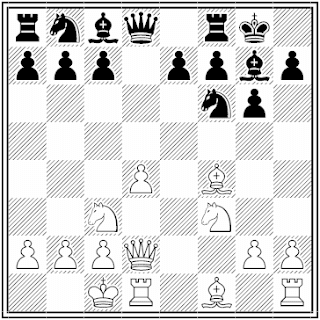I downloaded Stockfish today and tried to compare it to Houdini. I started the analysis on 5...g6, the starting point of the Bogoljubow defense (diagram).
First I tried Houdini 1.5a 64 bit, with 4096 MB memory. Houdini suggests 6.Bc4 untill a depth of 20 (49" thinking time ), then switches to 6.Bf4. After 5' thinking, it gives black an advantage of 0,17.
Stockfish 222 64 bit with 4096 MB memory suggests 6.Bb5+ c6 7.Bd3 untill 3', then switches to 6.Bc4. Only after 5' 31", Stockfish considers 6.Bf4 to be best, with a rating of 0,32 in blacks advantage.
So it seems both engines arrive at the same conclusion, but Houdini does it considerably faster ( at least in this position ). Also, Houdini seems to be more optimistic for the attacker.
After 6.Bf4 Bg7 7.Qd2 00 8.000 (diagram), Stockfish recommends 8...Nbd7 with an advantage of 0,40, whilst Houdini first suggests 8...Bf5, then 8...Bg4 with a black advantage of 0,20.
Delving a bit deeper in Stockfish's suggestion of 8...Nbd7, Houdini suggests 9.Kb1, whilst Stockfish believes 9.h3 is best.
The last position that I investigated is after 5...g6 6.Bc4 Bg7 7.00 00 8.Qe1 Nc6 9.Qh4 Bf5 (diagram). Stockfish suggests 10.h3 Na5, whilst Houdini plays it differently with 10.Bg5.
So it seems that the Blackmar Diemer gambit brings disagreement even under the strongest chess engines ! And you would expect that humans can form an objective assessment of the unbalanced positions that result after white's enterprising play, such as the Studier line in the Bogoljubow.



This proves how complex, wild and great our opening is :) Great article....
ReplyDelete